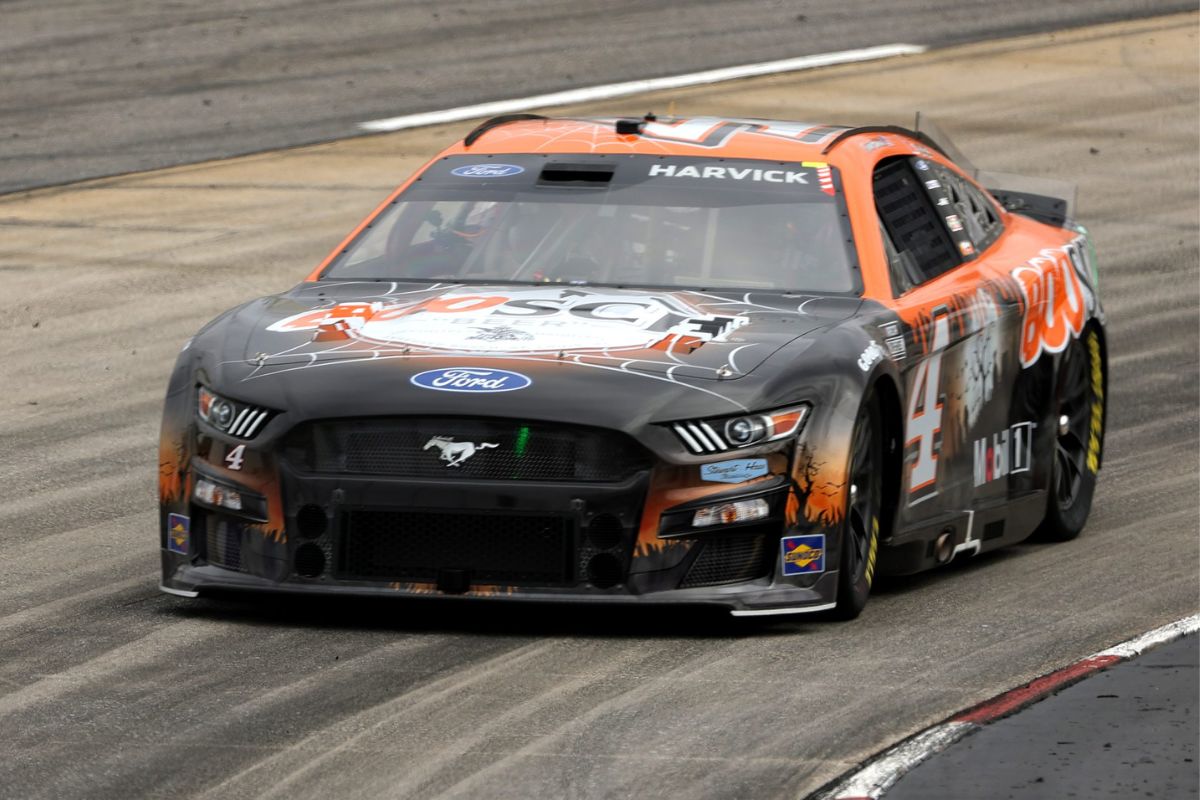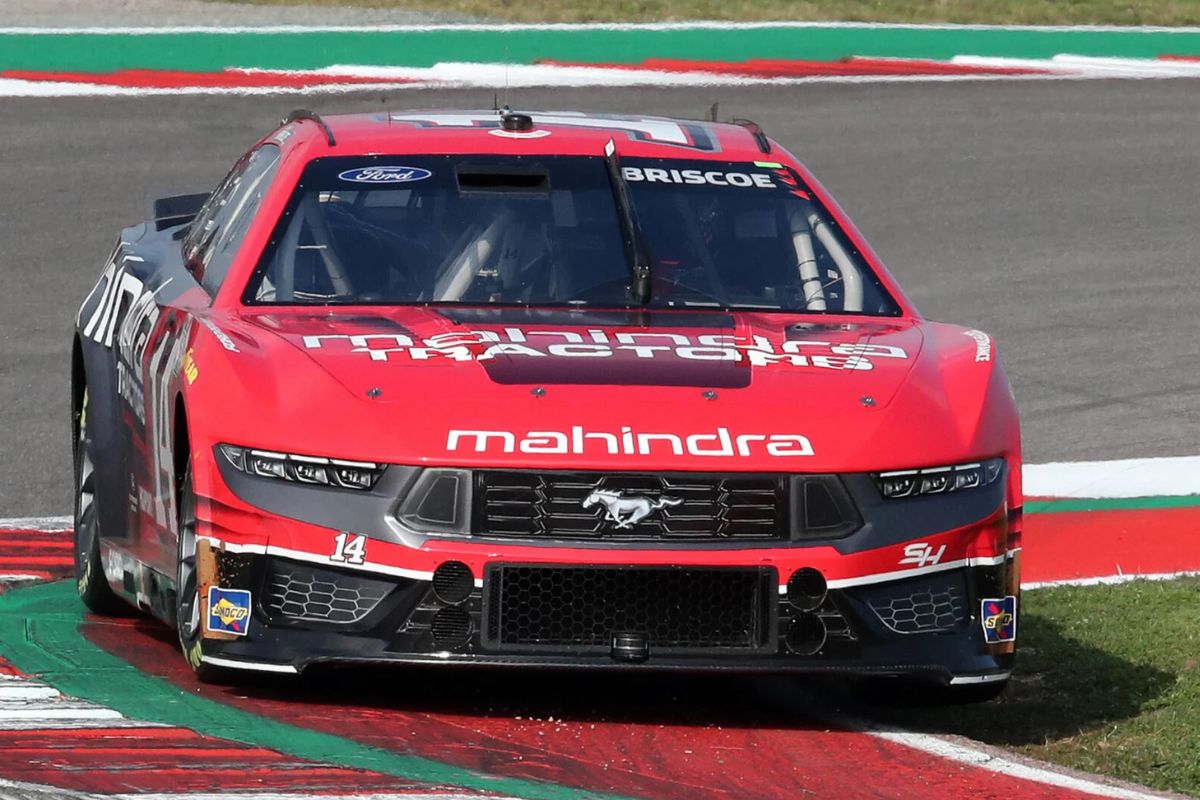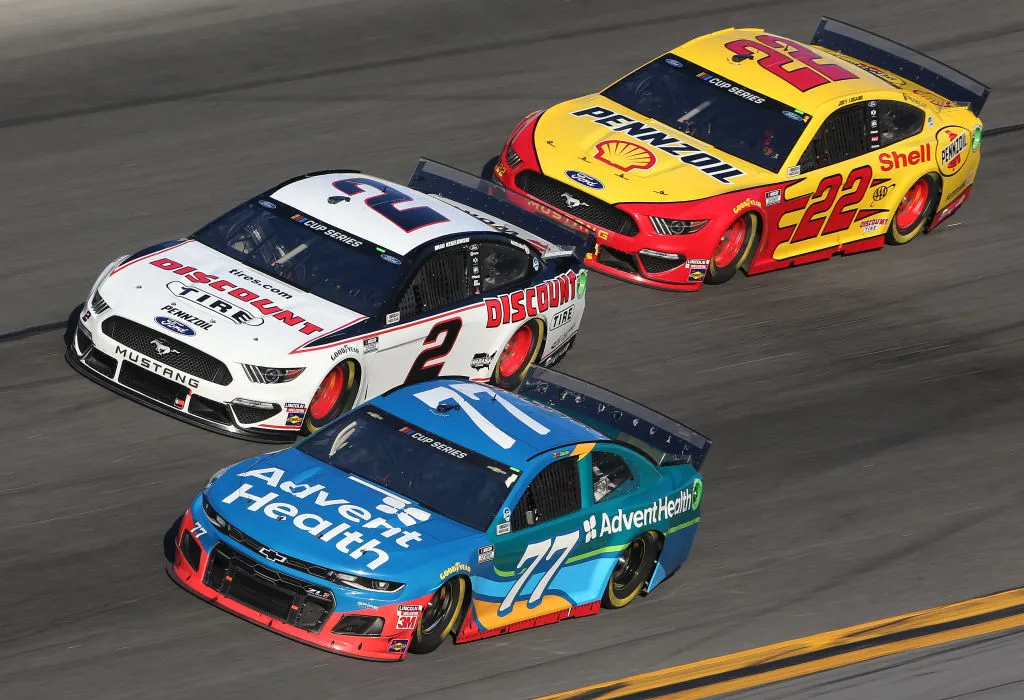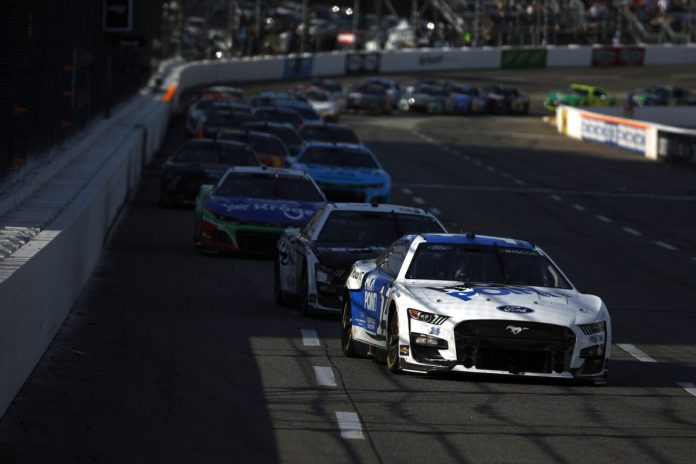Stewart-Haas Racing’s Martinsville Challenge: As Stewart-Haas Racing approaches the venerable Martinsville Speedway, the air is thick with anticipation and the weight of history. Known for its demanding track and the elusive victory that has slipped through their fingers, the team’s determination to conquer the so-called curse is noticeable. With a blend of strategic preparation, the adaptation to the new short track package, and a strong focus on execution, they stand on the precipice of rewriting their story at this iconic venue. The question that looms large, however, is whether their meticulously laid plans and the undeniable prowess of their drivers will suffice to navigate the complexities of Martinsville and secure a long-awaited victory. As the engines rev and strategies planned, one can only wonder if this will be the moment Stewart-Haas Racing turns the tide.
Key Takeaways
- Stewart-Haas Racing has focused on adapting strategies for the updated short track package at Martinsville.
- The team’s emphasis on simulation work and data analysis aims to optimize car performance for the unique Martinsville track.
- Drivers like Chase Briscoe and Aric Almirola show promise with impressive past performances, indicating potential success.
- Continuous improvement in setups, tire management, and error minimization are key for breaking the Martinsville curse.
- Leveraging their competitive advantage through detailed preparation and adaptability demonstrates Stewart-Haas Racing’s commitment to conquering Martinsville.
Martinsville Speedway: A Chance at the Iconic Grandfather Clock
In the cluster NASCAR circuits, Martinsville Speedway emerges as an essential battleground where the quest for the iconic grandfather clock presents Stewart-Haas Racing with a golden opportunity to overturn a season ruined by absence from the winner’s circle. This half-mile track, known for its tight turns and unique paperclip shape, has historically been a test for driver skill and team strategy. As a result, the upcoming Cup race is not just a contest of speed but a complex chess match demanding exceptional tactical acumen.
For Stewart-Haas Racing, the significance of Martinsville goes beyond the allure of its unique trophy. It represents a critical moment to demonstrate resilience and progress in a season that has, so far, defied their high expectations. The challenges faced have been multifaceted, ranging from adapting to technical regulations, optimizing car setups, to finessing pit stop strategies. Each of these elements must come together perfectly for Stewart-Haas Racing to emerge victorious in the demanding environment Martinsville Speedway is known for.
Engagement at this track requires a thorough exploration into the variations that define winning at Martinsville. The ability to manage tire wear, execute flawless pit strategies, and navigate the relentless close-quarters racing are paramount. It is here that Stewart-Haas Racing’s collective expertise and resolve are tested. A victory at Martinsville, as a result, is not just a triumph over competitors but a statement of resurgence, showcasing a team’s ability to adapt, innovate, and conquer amidst adversity. This race is an opportunity for Stewart-Haas Racing to reassess their season, leveraging Martinsville’s unique challenges as a springboard towards reclaiming their position at the pinnacle of NASCAR.
“I’m definitely excited for it,” Josh Berry “I feel like it should be another really good opportunity for us. It seems like our cars have been strong with the short tracks.”

Stewart-Haas Racing’s History of Speed at Martinsville
How has Stewart-Haas Racing managed to consistently display remarkable speed at Martinsville, especially in the Next-Gen era, distinguishing themselves on a track that has hindered many of their rivals? The answer lies in a combination of strategic preparation, driver skill, and technical finesse. At Martinsville, a track notorious for its tight corners and demanding brake usage, Stewart-Haas Racing has fine-tuned its approach to maximize performance where others have faltered.
In the Next-Gen era, this team’s adaptability has been on full display. Drivers like Chase Briscoe and Aric Almirola have showcased impressive performances, hinting at a deep understanding of the Next-Gen car’s variations and how they apply to Martinsville’s unique challenges. Chase Briscoe demonstrated his prowess at Martinsville last season, securing top-five finishes in both races while leading an impressive 109 laps. Additionally, in the four Next-Gen races at the Virginia short track, he has consistently finished no worse than ninth.
Aric Almirola showcased his skills at Martinsville last season, securing a sixth-place finish in one race and an impressive second-place finish in the other, leading a total of 66 laps across both events. Meanwhile, Ryan Preece led a remarkable 135 laps in the spring race after clinching the pole position. However, a speeding penalty contributed to his 15th-place finish. The consistency of Stewart-Haas Racing’s speed at Martinsville can also be attributed to the team’s ability to leverage data and feedback effectively.
“SHR as a whole has definitely had speed at Martinsville,” Preece said. “I mean, we saw it last year with Aric and Chase there at the end of the race.”
Adaptations for the New Short Track Package
Facing the introduction of the updated short track package this season, Stewart-Haas Racing is meticulously adjusting its strategies to navigate the anticipated shifts in car handling and the heightened importance of securing advantageous track positions during qualifying. The team, aware of the complex dynamics the new package introduces, is doubling down on simulation work and track testing to fine-tune their approach. With the unknown handling characteristics poised as a significant variable, the emphasis on qualifying performance has never been more critical.
The engineering teams at Stewart-Haas Racing are analyzing every component of the short track package, aiming to discover a balance that mitigates the unpredictability of the cars’ behavior. This involves a thorough examination of suspension settings, aerodynamic adjustments, and tire management strategies that could provide the edge needed to not only qualify well but also to maintain pace throughout the race. The team’s adaptability to these changes is a reflection of their commitment to overcoming the challenges that the Martinsville track presents.
Indeed, securing a strong qualifying position is just one piece of the puzzle in NASCAR. Ryan Preece knows this all too well. He emphasized the importance of his car’s ability to maintain speed even in the midst of turbulent air. It’s crucial for him to have a setup that allows him to navigate multiple racing lines, preventing him from getting stuck in unfavorable positions on the track. Unfortunately, Preece faced challenges with his car’s setup last weekend at Richmond, hindering his performance. On the other hand, Josh Berry experienced a smoother ride with a more favorable setup. Demonstrating his skill and adaptability, Berry charged from 30th place to an impressive fourth position in just a short span of racing. It’s a testament to the importance of having the right setup and strategy to succeed in NASCAR’s competitive landscape.
“I really enjoyed seeing the capability that (Berry’s team) had and what we’re capable of at SHR,” Preece said. “Going into Martinsville, we need that same thing. We need the maneuverability; you need to roll the center fast.”

Showing Progress: Stewart-Haas Racing’s Journey
Building upon their adjustment to the new short track package, Stewart-Haas Racing is venturing on a journey to demonstrate significant progress after a season that fell short of expectations. With the team’s co-owner, Tony Stewart, vocalizing the imperative for advancement, there’s a noticeable sense of urgency permeating the garage. This drive for improvement is not merely about tweaking engines or refining aerodynamics; it’s a holistic approach that encompasses strategy, execution, and, perhaps most importantly, consistency.
The team’s endeavor is not solely technical. Drivers are acutely aware of the dual responsibility resting on their shoulders – to manifest speed and to eschew errors. This dual focus is symbolic of a broader strategy aimed at elevating Stewart-Haas Racing’s standing within the fiercely competitive environment of NASCAR. Speed, while fundamentally important, must be complemented by strategic acumen and an unyielding focus on precision. In this perspective, avoiding mistakes is not simply about preventing mishaps; it’s about cultivating a culture of excellence that permeates every lap, every race.
This journey towards progress is a confirmation of Stewart-Haas Racing’s resilience and determination. It’s a narrative of a team not content to rest on its achievements but rather one that’s relentlessly pursuing improvement. As they navigate the challenges of the new short track package and the broader competitive landscape, their efforts to showcase speed and precision on the track serve as a vivid illustration of their commitment to breaking through barriers and setting new benchmarks of success.
“If we’re not having the results we’re looking for, we’re going to start making some major changes,” Stewart said “Everybody knows that. Everybody understands that.
“It’s those guys’ jobs at SHR to take what we have and make it better. It doesn’t mean we’ve got to go out and win eight or 10 races this season, but we need to see the needle move in the right direction. We need to make progress.”
Looking Ahead: Challenges and Potential for Stewart-Haas Racing
As the season progresses, the four-car organization is showing signs of improvement, despite boasting an average driver age of 30 and only one Cup win among its current lineup. Chase Briscoe and Noah Gragson have both notched two top-10 finishes, signaling their growing competitiveness on the track. Ryan Preece has been consistently outperforming his qualifying efforts, finishing better than his starting position in all but one race, showcasing his ability to capitalize on race day. Meanwhile, Josh Berry has demonstrated his speed at short tracks by leading laps in three races, indicating his potential for success in the future. It’s a promising start for the organization as they continue to fine-tune their performance and strive for even greater success on the NASCAR circuit.
In the opening seven races of the season, Stewart-Haas Racing (SHR) has discovered that their cars possess the necessary speed, and their drivers are certainly up to the task. However, it’s become evident that the key to unlocking their full potential lies in eliminating mistakes, honing in on the perfect setup, and executing flawlessly during race weekends. The potential is there, but now it’s about fine-tuning every aspect of their performance to consistently contend at the front of the pack. With the talent and resources at their disposal, SHR is assured to rise to the challenge and establish themselves as formidable competitors in the NASCAR arena.
“If you look at where we were even six months ago, we’ve come a long way,” Briscoe said. “We still have a much longer way to go, but we’ve certainly been way more competitive.”
“I told (crew chief Rodney Childers) this not too long ago, ‘Kevin (Harvick) was 800-and-something starts into racing and I’m only in the teens,” Berry said.
“So it’s gonna take a little time for me to get acclimated, to eliminate some of the mistakes that I’ve made at the start of the season. But I think we’re already seeing the potential is there. The speed can be there.”

News in Brief
Stewart-Haas Racing tackles the Martinsville Speedway with a blend of strategic acumen and technological adaptation, marking a crucial moment in their quest to transcend past limitations.
The integration of new short track packages illustrates a forward-thinking approach, essential for maneuvering through the intricacies of such a historic venue. This effort not only highlights the team’s resilience but also sets a precedent for overcoming challenges through innovation.
As Stewart-Haas Racing advances, the potential for breaking the Martinsville curse becomes increasingly tangible, embodying a proof to their unwavering pursuit of excellence.
Our Reader’s Queries
Q: Who has won the most races at Martinsville?
A: Hendrick Motorsports boasts a staggering 28 NASCAR Cup Series victories at Martinsville Speedway, setting the benchmark for the most wins by a team at a single track.
Q: Does Stewart-Haas Racing still exist?
A: Stewart-Haas Racing is a prominent American professional stock car racing team, active in both the NASCAR Cup Series and the NASCAR Xfinity Series.
Q: What is the fastest speed at Martinsville Speedway?
A: Martinsville Speedway’s qualifying record is relatively low compared to other tracks, with cars barely exceeding 100 mph (100.201 mph to be exact).
Also Read: Stewart-Haas Racing’s 6-Car Hauler: Unveiling the Epic Cross-Country Journey!


